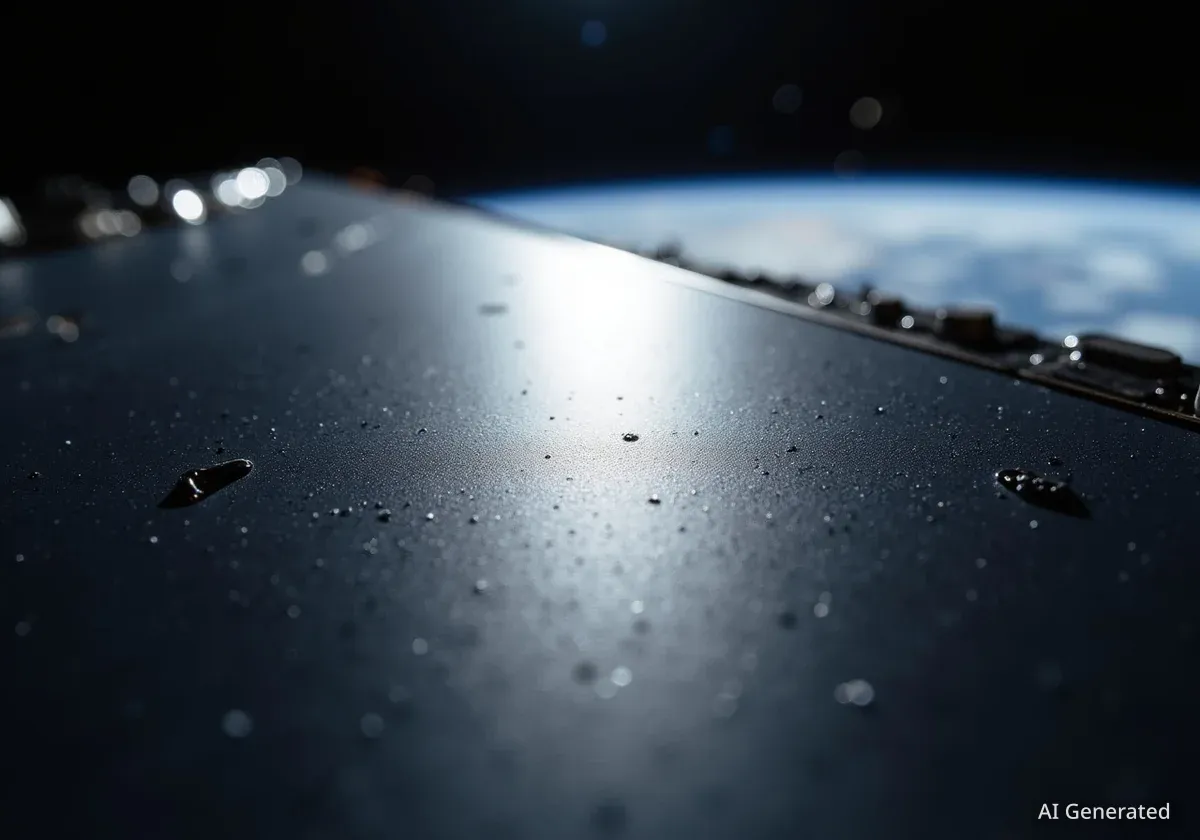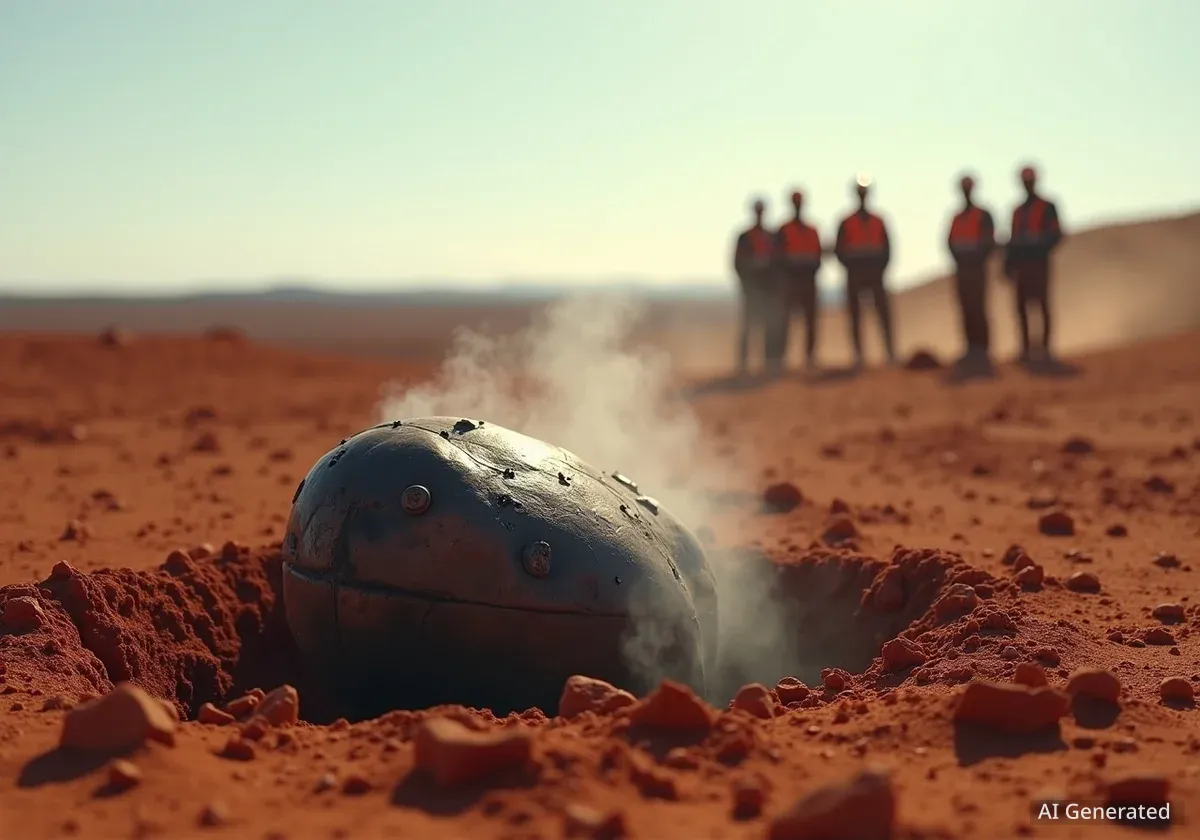A Georgia-based company has introduced a new composite material called "Space Armor" designed to protect satellites and astronauts from the growing threat of high-speed orbital debris. The material offers a lightweight and durable alternative to traditional metal shields, which have been used for decades.
Developed by Atomic-6, the technology uses a unique manufacturing process to create tiles that can withstand hypervelocity impacts. These impacts, from particles traveling over 16,000 mph, pose a significant risk to critical space infrastructure. The company announced the new product on October 16 and plans to test it in orbit next year.
Key Takeaways
- Atomic-6 has developed "Space Armor," a composite material to protect spacecraft from orbital debris.
- The material is designed to be lighter and stronger than traditional aluminum Whipple Shields.
- Unlike metal shields, Space Armor is intended to minimize the creation of secondary debris upon impact.
- The composite is also transparent to radio frequencies, allowing it to protect communication equipment without blocking signals.
- The technology has undergone ground-based hypervelocity testing and is scheduled for in-orbit testing in 2026.
The Growing Danger of Orbital Debris
Low Earth Orbit is increasingly crowded with millions of pieces of space junk. These objects, ranging from defunct satellites to tiny flecks of paint, travel at extreme speeds. According to Atomic-6, even small, untrackable particles can cause catastrophic damage to operational spacecraft.
"Satellites and astronauts are constantly threatened by millions of untrackable, hypervelocity particles in orbit," the company stated. An impact from an object moving at 16,000 mph (25,750 kph) can penetrate fuel tanks, disable power systems, or compromise a spacecraft's structure.
A High-Speed Threat
Orbital debris travels at speeds where even a small object carries immense kinetic energy. The impact from a 1-centimeter piece of debris is comparable to the energy of an exploding hand grenade, posing a lethal threat to both robotic and human missions.
The problem is compounded by the fact that traditional shielding methods can sometimes create more debris. This reality has pushed researchers and private companies to develop new materials that can absorb impacts more effectively without fragmenting.
Introducing Space Armor Technology
Atomic-6, based in Marietta, Georgia, created Space Armor using a proprietary fiber-to-resin manufacturing method. The result is a multi-functional composite that is both strong and lightweight. The development process for the final product took approximately 18 months from concept to reality.
Trevor Smith, the CEO of Atomic-6, explained that the potential of composites for this application has long been recognized. "Everyone has known that composite materials can make potentially lighter, stronger MMOD [micrometeoroid and orbital debris] shields," he said. The company's innovation lies in its specific product design and manufacturing skills.
"It has taken around 18 months to take Space Armor tiles from an idea to a final product. So we took the shot at making a tile, and were blown away by the test results."
Dual-Function Protection
One of the key features of Space Armor is its transparency to radio communications. This means an enclosure made from the tiles can protect sensitive communication hardware from physical impacts without interfering with the transmission or reception of signals. This dual functionality simplifies satellite design by combining structural protection with electronic compatibility.
The material is produced in hexagonal tiles, but Smith noted that the manufacturing process is flexible. "We offer Space Armor in simple hex tiles, but we can technically make Space Armor into most any shape you want," he added.
An Advancement Over Traditional Shielding
For decades, spacecraft have relied on the "Whipple Shield" for protection. Invented by astronomer Fred Whipple in the 1940s, this design typically uses a thin outer layer of aluminum as a sacrificial bumper. This bumper is spaced apart from the main spacecraft wall.
How a Whipple Shield Works
When a piece of debris strikes the outer bumper of a Whipple Shield, the impact shatters both the object and the bumper area into a cloud of smaller particles. This cloud spreads out as it travels through the gap, distributing the impact energy over a larger area of the main spacecraft wall, which can then withstand the less-concentrated force.
However, a major drawback of metal-based Whipple Shields is that the impact generates a spray of secondary fragments. These new pieces of metal rubble become part of the orbital debris problem, potentially endangering other satellites.
Space Armor's composite nature is designed to address this issue. Composites tend to absorb and dissipate energy differently than metals, with the goal of capturing an impacting object without creating a large cloud of new, dangerous projectiles.
Testing and Future Deployment
Before being cleared for space, Space Armor has undergone extensive testing on Earth. These tests involve using special projectile-firing devices, often called "hypervelocity guns," to simulate the high-speed impacts that occur in orbit.
According to Smith, the ground tests yielded impressive results. The next step is to validate this performance in the actual space environment. Atomic-6 plans to achieve this by integrating Space Armor tiles onto customer satellites scheduled for launch next year.
"The orbital environment has surprisingly high amounts of debris already," Smith said. He explained that this existing debris field will serve as a natural test bed for the material. "We would effectively be testing the tiles using 'natural analogues' of hypervelocity guns. The orbital debris is already up there."
This real-world data will be crucial for validating Space Armor as a viable, next-generation solution for protecting the valuable assets operating in an increasingly hazardous orbital environment.





